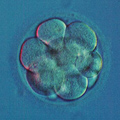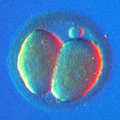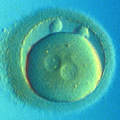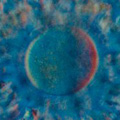Gender Selection

ViaGene Fertility offers the only method that is 100% accurate in selecting the gender of a child. Throughout history couples wishing to conceive have shown much interest in choosing whether their child would be male or female. For over a hundred years now, we know that our gender is determined by the sex chromosome in the sperm that fertilizes the egg. Sperm carrying an "X" chromosome combines with the "X" chromosome found in all eggs to form an "XX" or female embryo. Half of the spermatozoa carry a "Y" chromosome and upon fertilization produce "XY" or male embryos.
Techniques for enriching the environment surrounding the egg at the time of fertilization with male or female bearing sperm include diet, timing of the intercourse, douching, sperm spinning and more recently sperm flow cytometry. At best, some of these methods increase the odds of having a boy or girl, but ALL of them fail to come even close to 100%. The ONLY reliable method of gender selection is through PGD: using DNA probes specific for X and Y chromosomes, PGD can identify male and female embryos with absolute accuracy.
Family Balancing
Couples may choose gender selection for several reasons. One would be for family balancing. Although in the general population the odds of having a male or female child is 50:50, every family does not end up with an equal number of boys or girls.
For whatever their personal reason may be, some couples with three, four or even more children of the same gender are intent on having at least one child whose sex is not the same as the rest of their children. Rather than continuing to add to the world's population and subject themselves to undue financial and health risks by repeated pregnancies, many couples elect to do PGD because of its 100% effectiveness.
The procedure requires utilizing IVF because the embryos must be available outside the mother's body for the biopsy of a single cell. Once the sex of each embryo is determined, those of the desired gender are transferred into the mother for implantation and the remaining embryos are cryopreserved for future use or donated.
Sex-Linked Disorders
Another reason for gender selection is to avoid X-linked single-gene disorders. If a father is a carrier of an X-linked genetic disorder, that mutation would only be passed down to a female offspring, while a male offspring would be genetically normal. When the mother is a carrier of X-linked genetic disorder, then selecting only female embryos assures that none of the children will have a debilitating condition, although half of the girls will be the "carriers" of mutation like their mother.
The accuracy that accompanies PGD is crucial when female and male embryos must be identified with certainty in order for the offspring to not be affected by the X-linked disorder. Examples of such disorders include: Lesch-Nyhan Syndrome, Hunter Syndrome, Duchenne Muscular Dystrophy, and Hemophilia. There are also Y-linked genetic disorders which commonly result in infertility and failure to develop proper sex organs. In those instances, selecting a female offspring would result in a genetically normal baby.
Gender Selection and X/Y Aneuploidy
After trisomy 21 (Down's Syndrome) the second most common chromosomal abnormality in humans is an abnormal number of sex chromosomes. Per each 100,000 recognized pregnancies, around 1,400 abort due to an abnormal number of sex chromosomes, 100-200 boys are born with Kleinfelter's syndrome (instead of XY they have XXY, XXXY, XXYY, or even XXXXY sets of sex chromosomes) and about 50 girls are born with Turner's syndrome (instead of XX they have X, XXX, or XXXX). All these genetic abnormalities are selected out during PGD for Gender Selection.






